Counties with the most farmland in Idaho
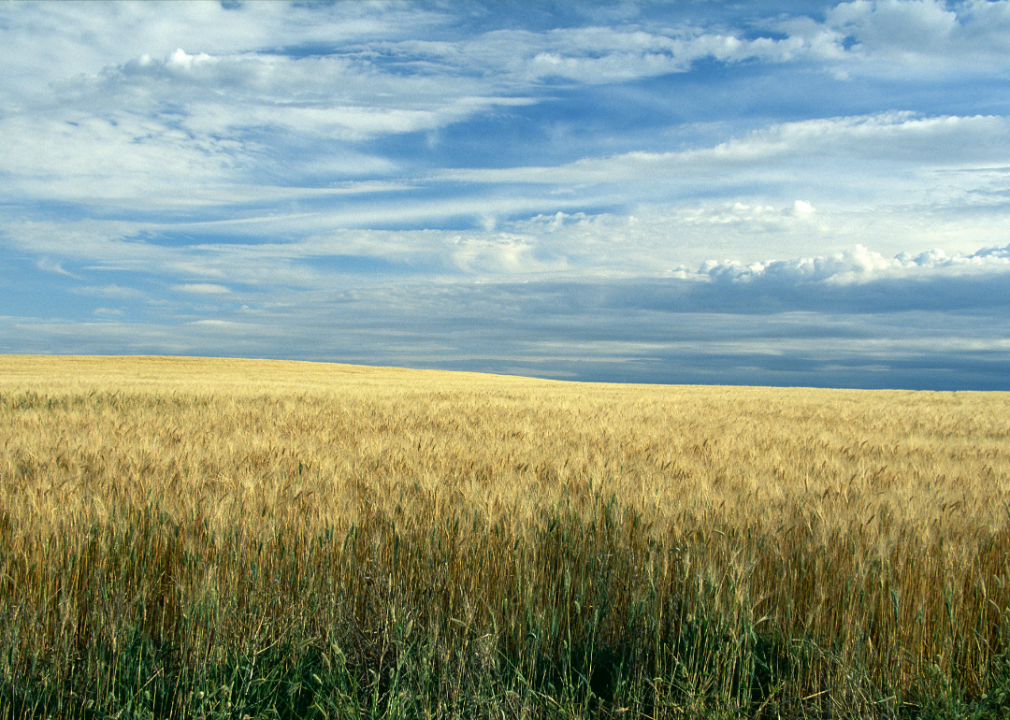
Canva
Counties with the most farmland in Idaho
Farmland across the U.S. is disappearing by the millions of acres each decade by some estimates as sprawling urban development driven by rising housing costs pushes further into rural pastures.
The farmland that still exists in the U.S. is heavily dedicated to growing plants that Americans can’t consume—grass. That grass, accounting for more than 300 million acres now, feeds our livestock, provides sod for new development, and serves as a cover crop to protect soil health between harvests.
Demand for major crops like corn and soybeans to feed Americans is only forecast by the USDA to grow in the coming decade, and demand for U.S. agricultural exports is expected to grow similarly.
The COVID-19 pandemic dramatically changed the way people purchased and consumed food, placing renewed attention on an increasingly consolidated agricultural industry where family farms have been swallowed up by large food corporations.
And after shifting behaviors caused massive economic swings in the U.S. and elsewhere, the Russian invasion of Ukraine forced food producers to once again account for yet another shock with so much of the world’s grain capital taken offline by warfare.
War and corporate interests aside, farms have also had to reckon with a changing climate. Wheat fields were once commonplace across the country, but drought conditions of late have caused farmers to give up growing the crop entirely. Agitated by climate change, the shortage of water in parts of the country coupled with higher interest rates and the ongoing war in Ukraine are making agricultural businesses harder to run profitably.
To illustrate where American farms still persevere, Stacker compiled a list of counties with the most farmland in Idaho using data from the Agriculture Department’s Farm Service Agency. Farmers reported the data as mandated by participation in USDA income support programs, including Agriculture Risk Coverage and Price Loss Coverage as well as loan assistance. Counties are ranked by total acres of farmland.
In Idaho, there are 8,493,590 acres of farmland, with native grass being the most common crop.
![]()
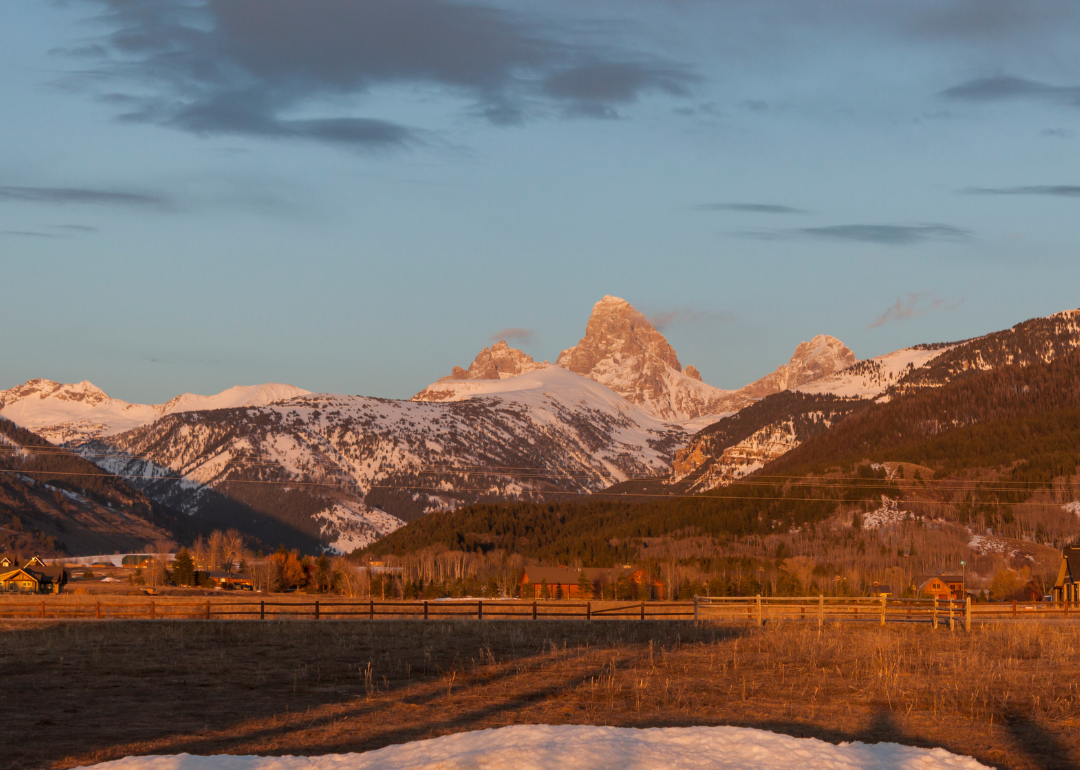
Canva
#25. Teton
– Farmland: 88,480 acres (1.0% of state total)
– Farms: 420
– Most common crop: Native grass (18,011 acres, 20.4% of county farmland)
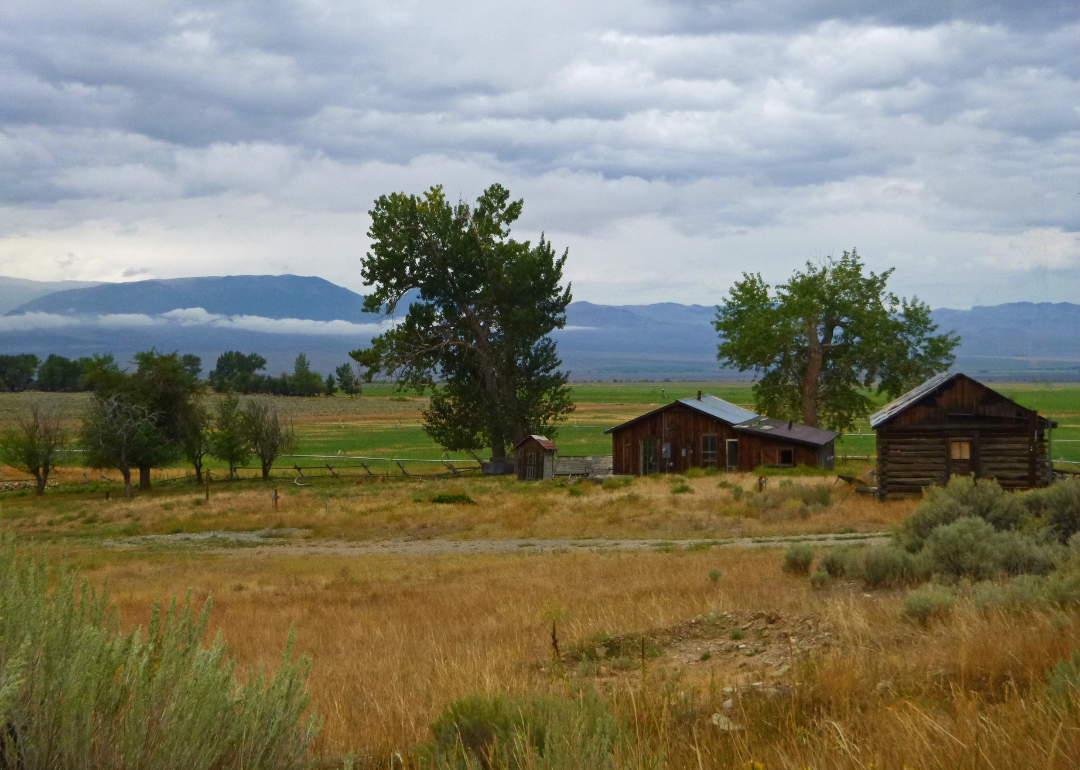
Canva
#24. Lemhi, North Custer
– Farmland: 111,447 acres (1.3% of state total)
– Farms: 431
– Most common crop: Native grass (58,007 acres, 52.0% of county farmland)

Norm Lane // Shutterstock
#23. Benewah, South Shoshone
– Farmland: 112,487 acres (1.3% of state total)
– Farms: 406
– Most common crop: Soft white winter wheat (27,801 acres, 24.7% of county farmland)
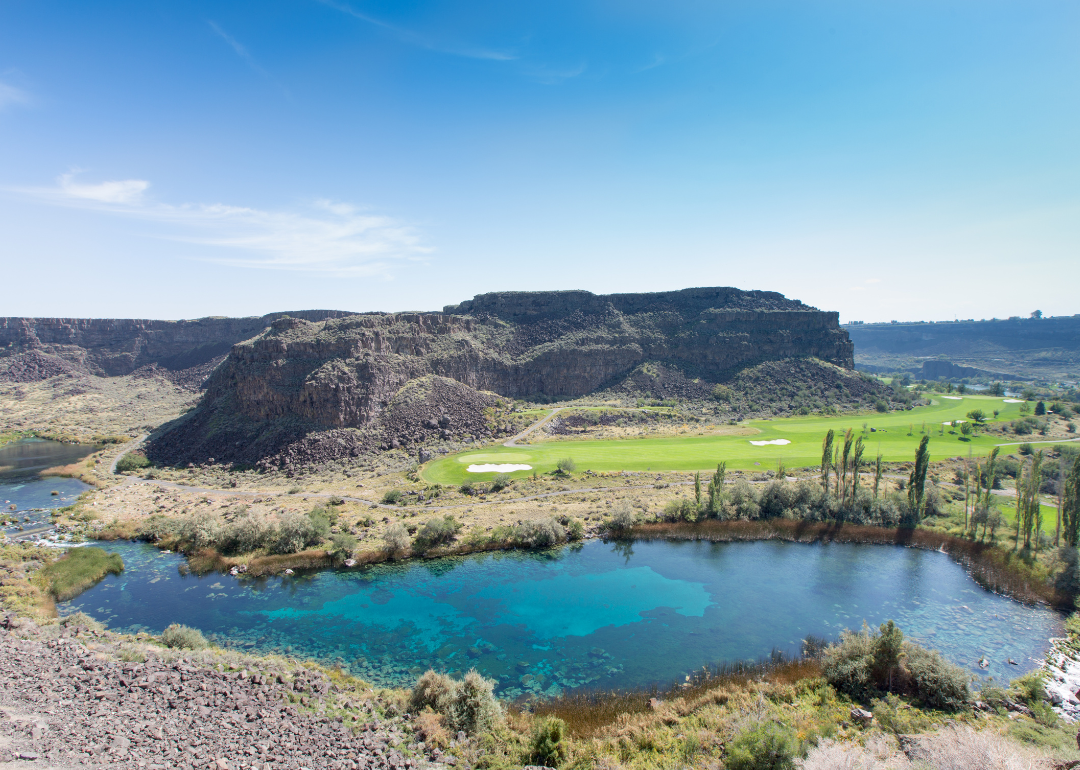
Canva
#22. Jerome
– Farmland: 137,305 acres (1.6% of state total)
– Farms: 494
– Most common crop: Alfalfa (31,090 acres, 22.6% of county farmland)
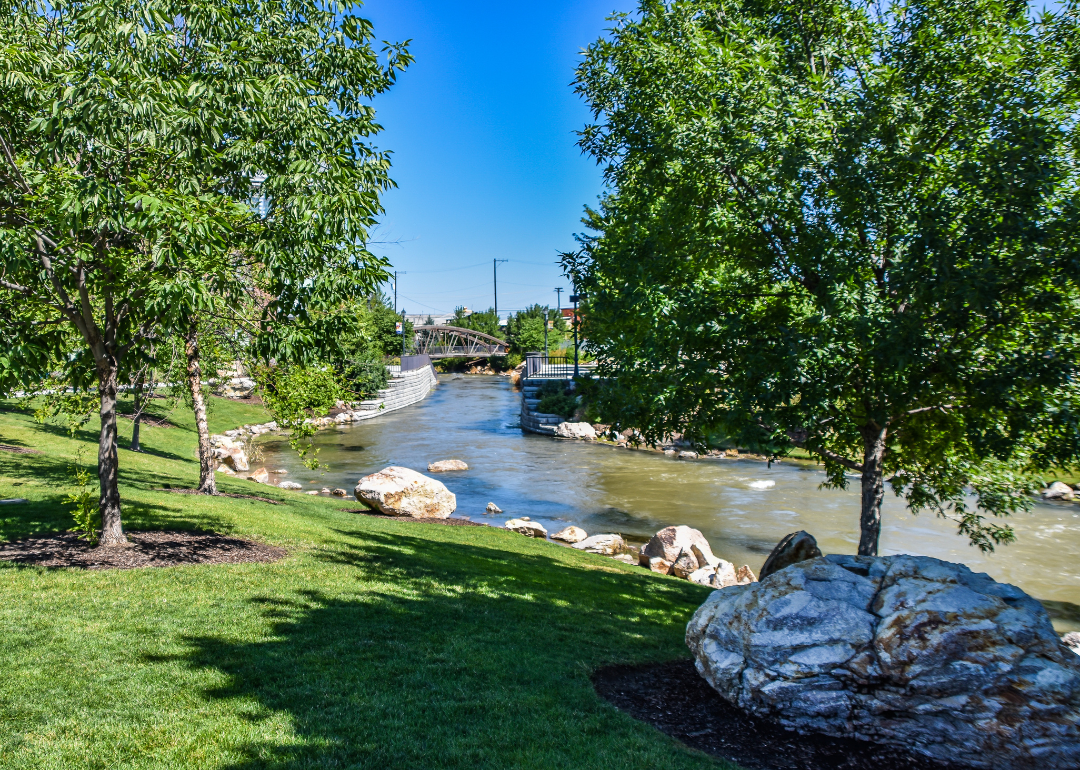
Canva
#21. Canyon
– Farmland: 142,967 acres (1.7% of state total)
– Farms: 1,258
– Most common crop: Soft white winter wheat (23,042 acres, 16.1% of county farmland)
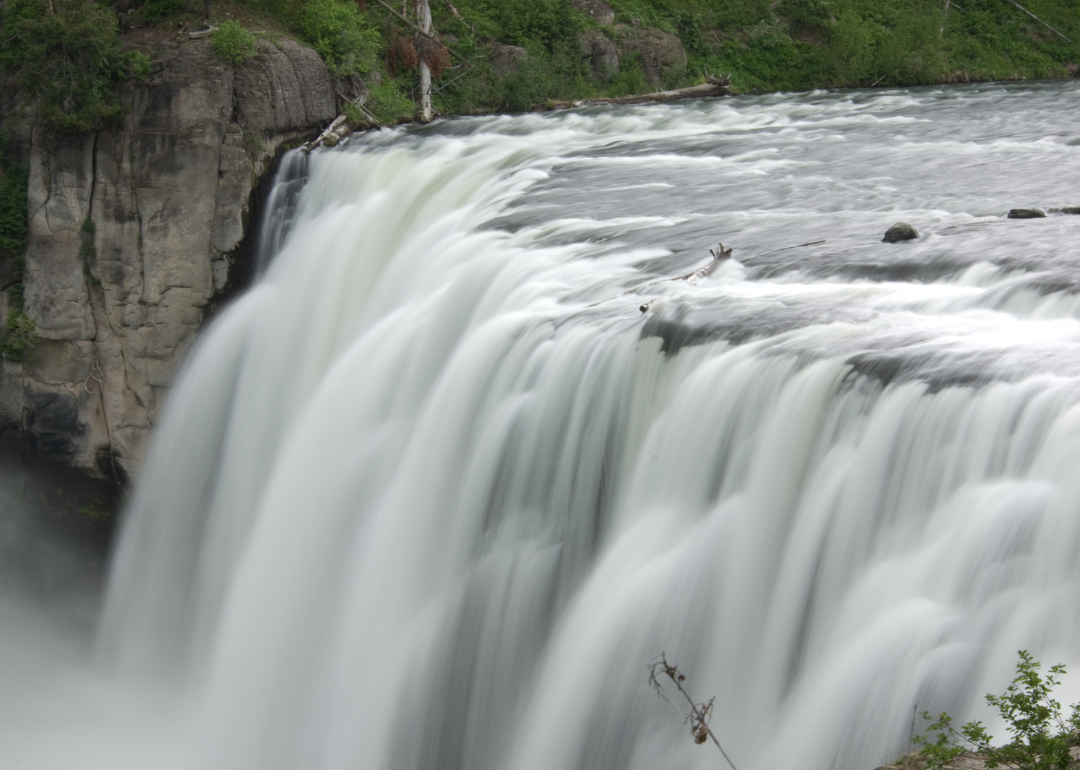
Canva
#20. Madison
– Farmland: 158,563 acres (1.9% of state total)
– Farms: 543
– Most common crop: Spring barley (30,327 acres, 19.1% of county farmland)
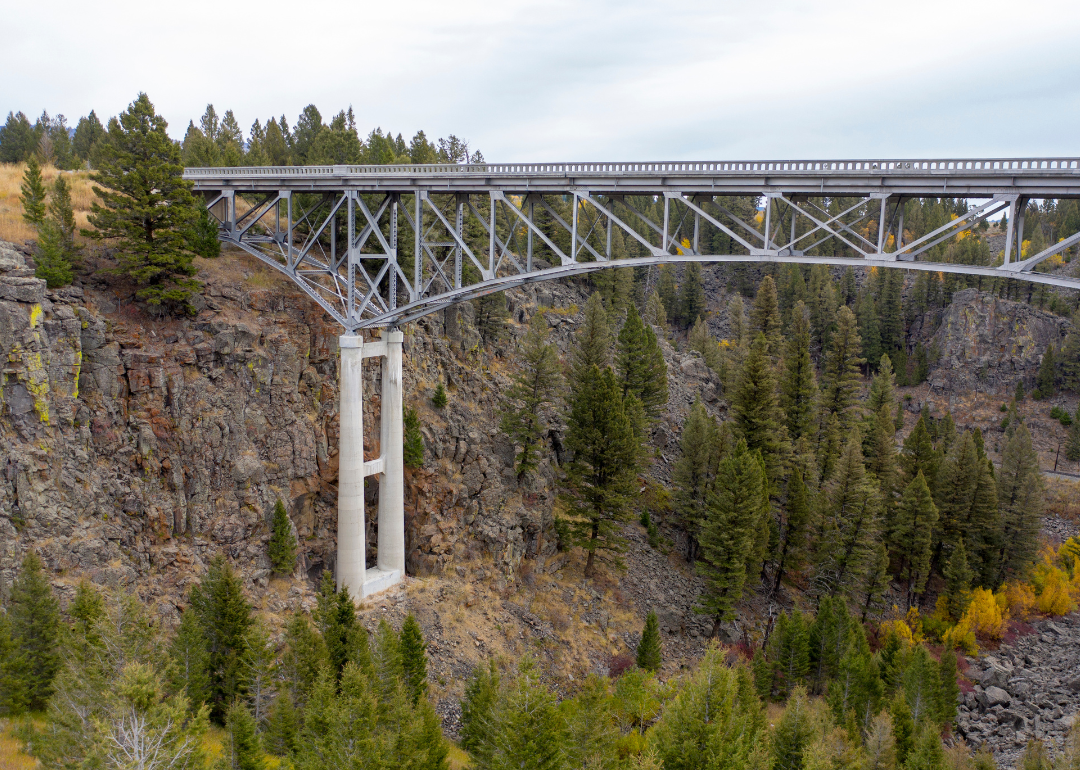
David Gilder // Shutterstock
#19. Clark
– Farmland: 181,747 acres (2.1% of state total)
– Farms: 156
– Most common crop: Native grass (155,365 acres, 85.5% of county farmland)
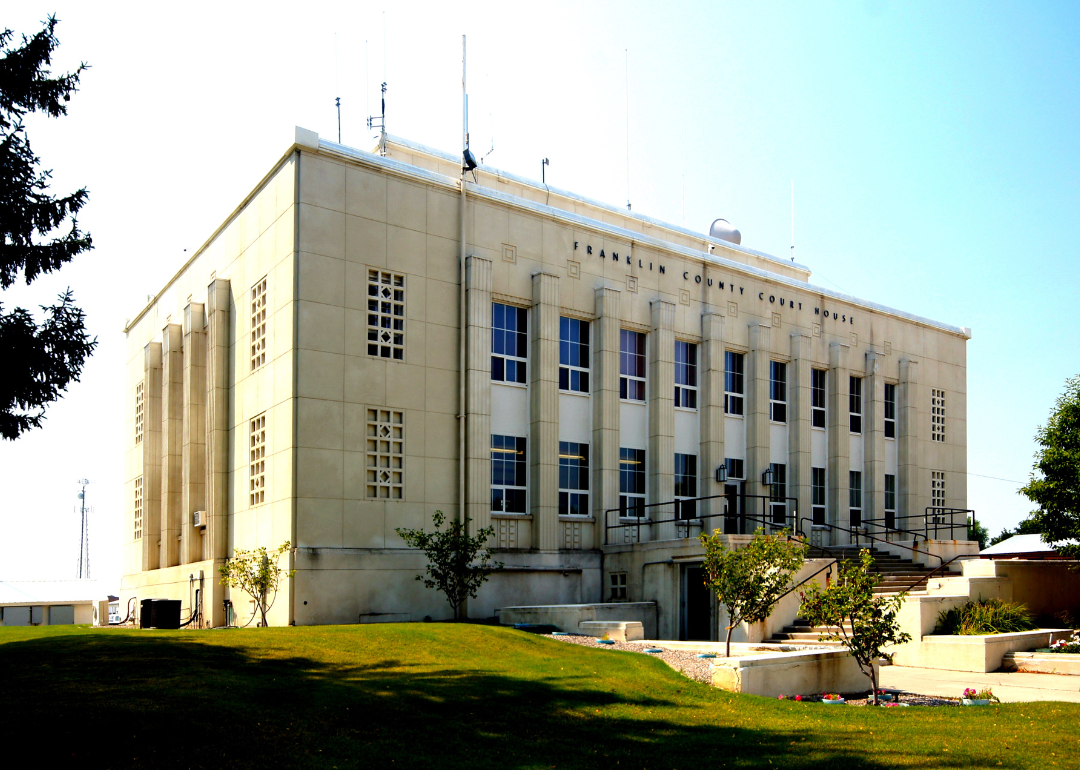
Canva
#18. Franklin
– Farmland: 186,178 acres (2.2% of state total)
– Farms: 582
– Most common crop: Native grass (65,695 acres, 35.3% of county farmland)
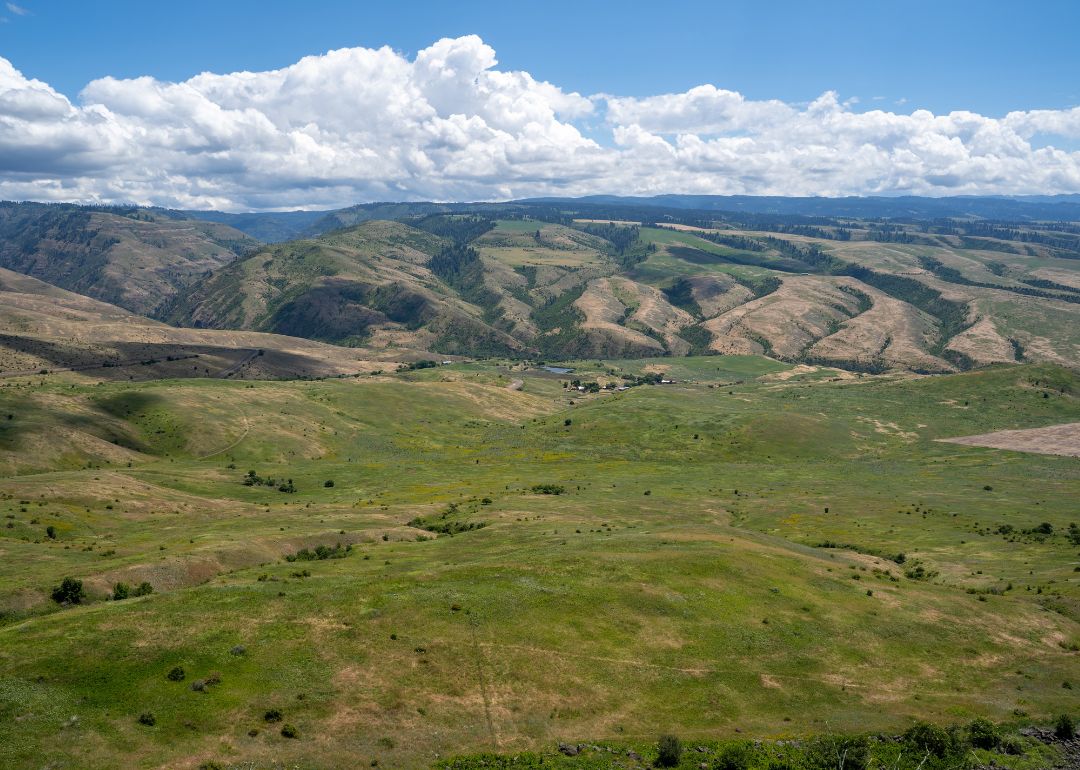
melissamn // Shutterstock
#17. Lewis
– Farmland: 205,792 acres (2.4% of state total)
– Farms: 497
– Most common crop: Soft white winter wheat (65,964 acres, 32.1% of county farmland)
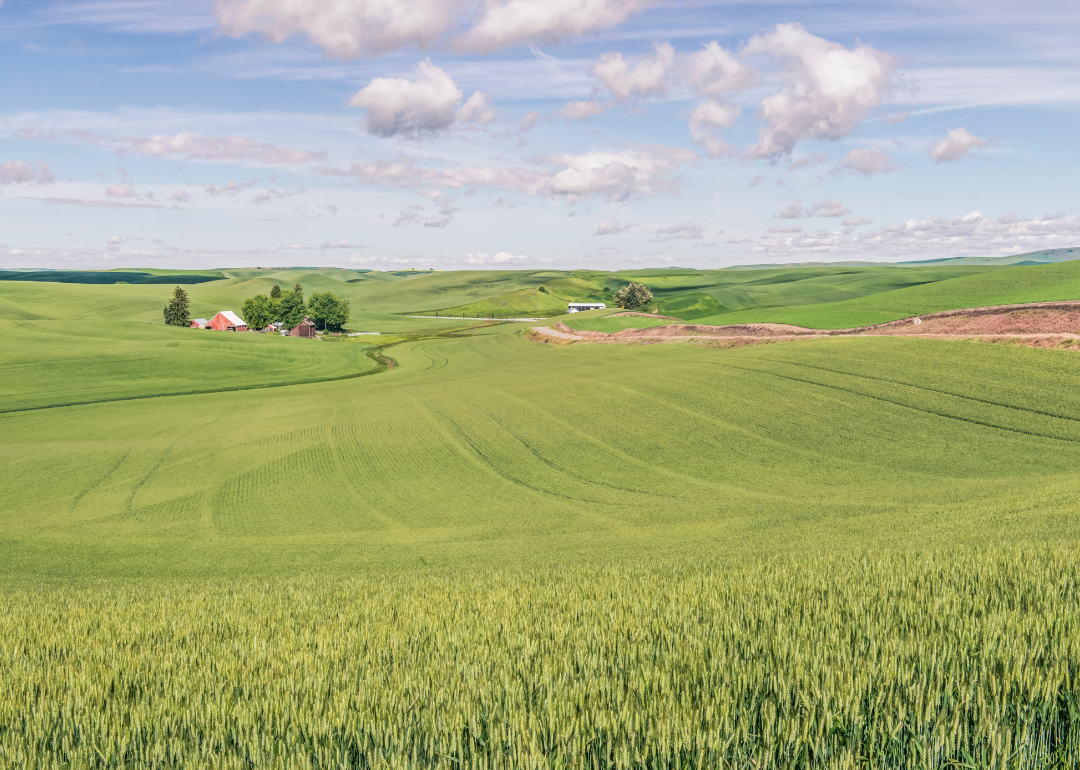
Danita Delimont // Shutterstock
#16. Latah
– Farmland: 215,647 acres (2.5% of state total)
– Farms: 1,192
– Most common crop: Soft white winter wheat (65,875 acres, 30.5% of county farmland)
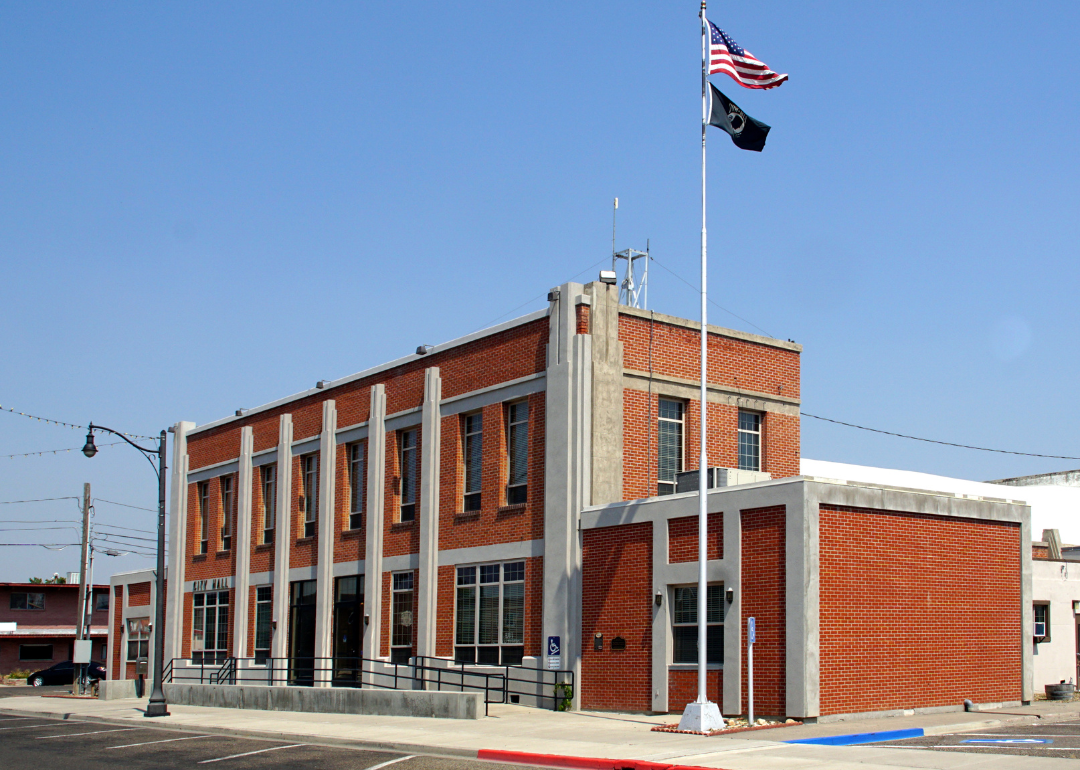
Canva
#15. Minidoka
– Farmland: 226,290 acres (2.7% of state total)
– Farms: 860
– Most common crop: Spring barley (44,140 acres, 19.5% of county farmland)
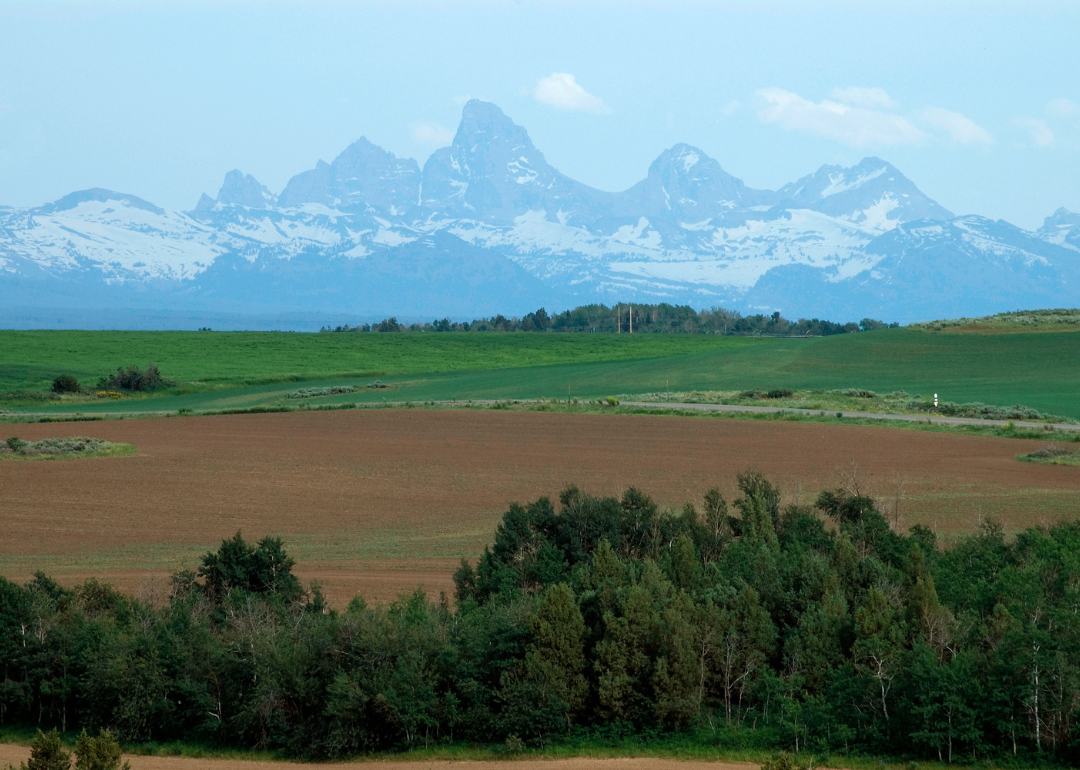
Canva
#14. Fremont
– Farmland: 243,715 acres (2.9% of state total)
– Farms: 709
– Most common crop: Native grass (55,623 acres, 22.8% of county farmland)
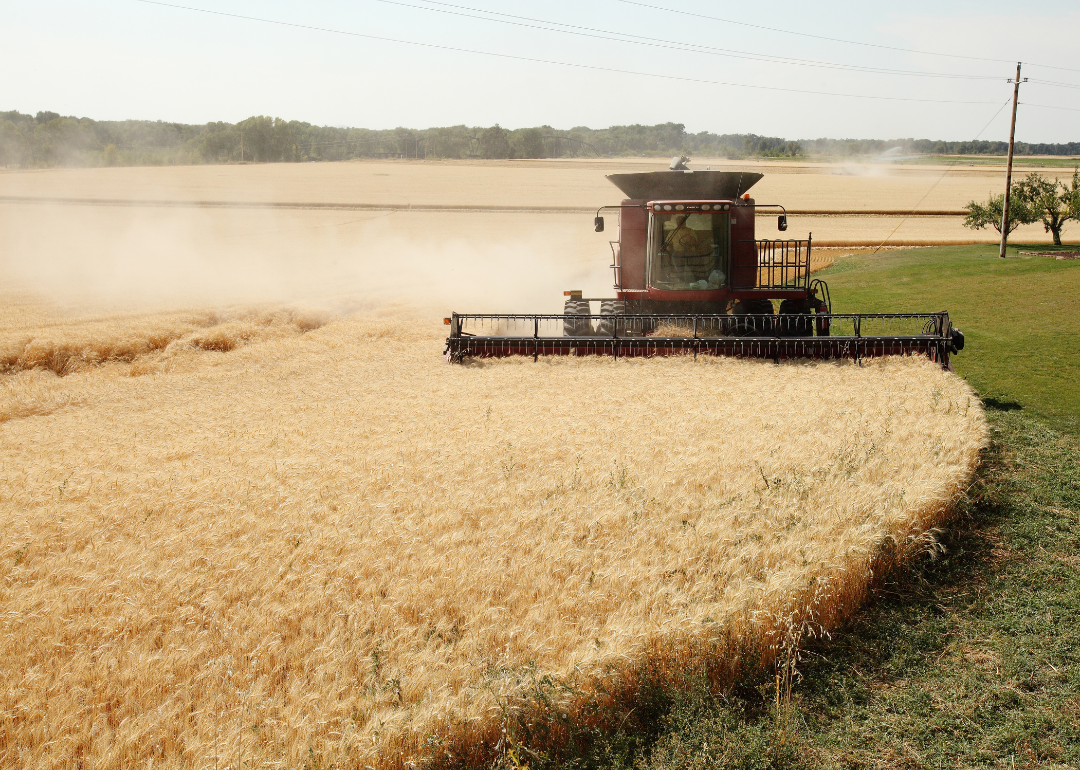
B Brown // Shutterstock
#13. Jefferson
– Farmland: 244,681 acres (2.9% of state total)
– Farms: 792
– Most common crop: Alfalfa (88,939 acres, 36.3% of county farmland)
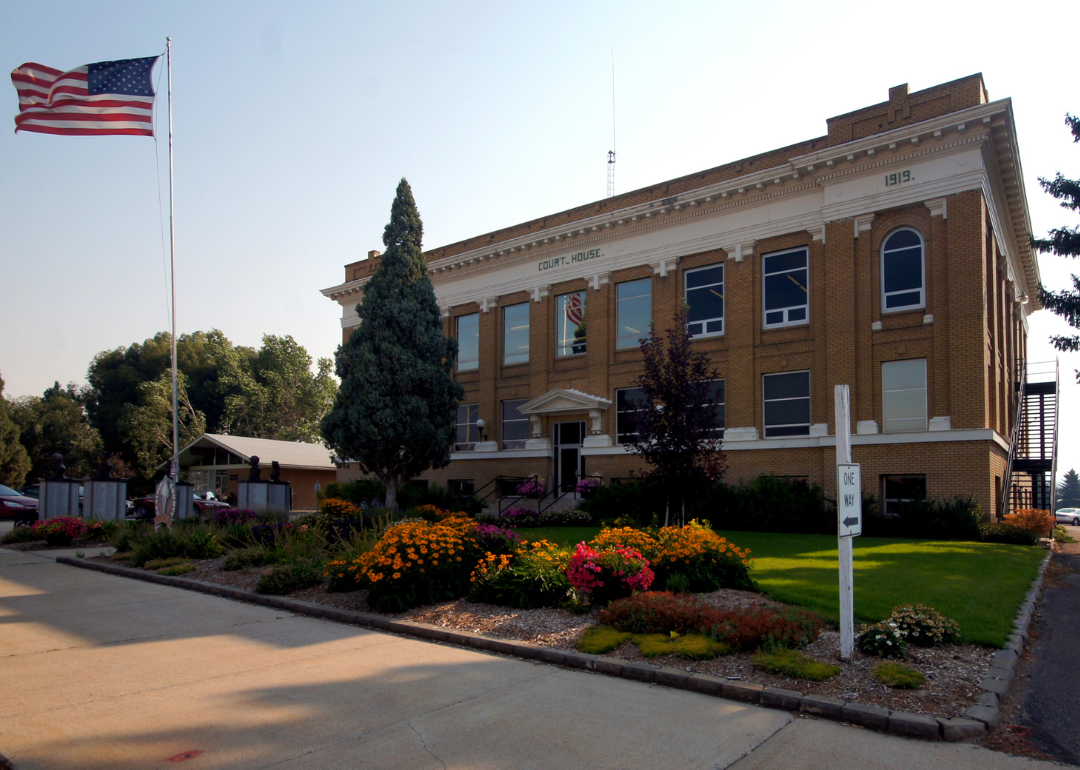
Canva
#12. Caribou
– Farmland: 323,570 acres (3.8% of state total)
– Farms: 483
– Most common crop: Native grass (126,687 acres, 39.2% of county farmland)
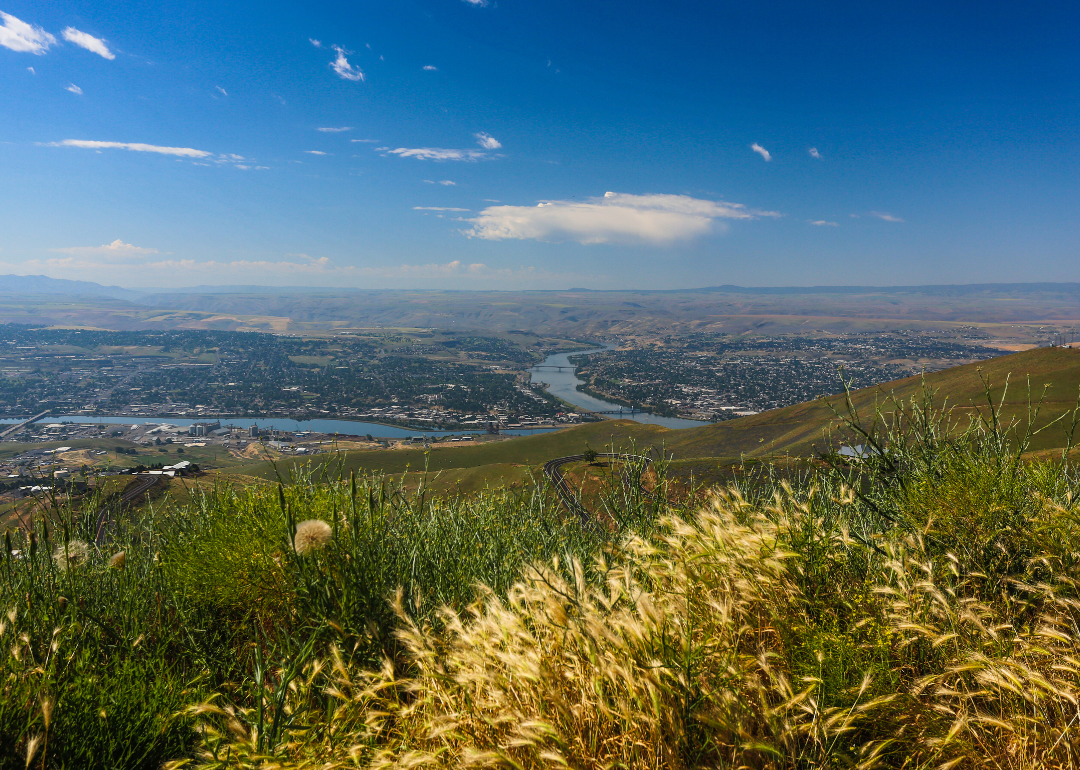
Canva
#11. Nez Perce
– Farmland: 332,124 acres (3.9% of state total)
– Farms: 811
– Most common crop: Native grass (111,077 acres, 33.4% of county farmland)
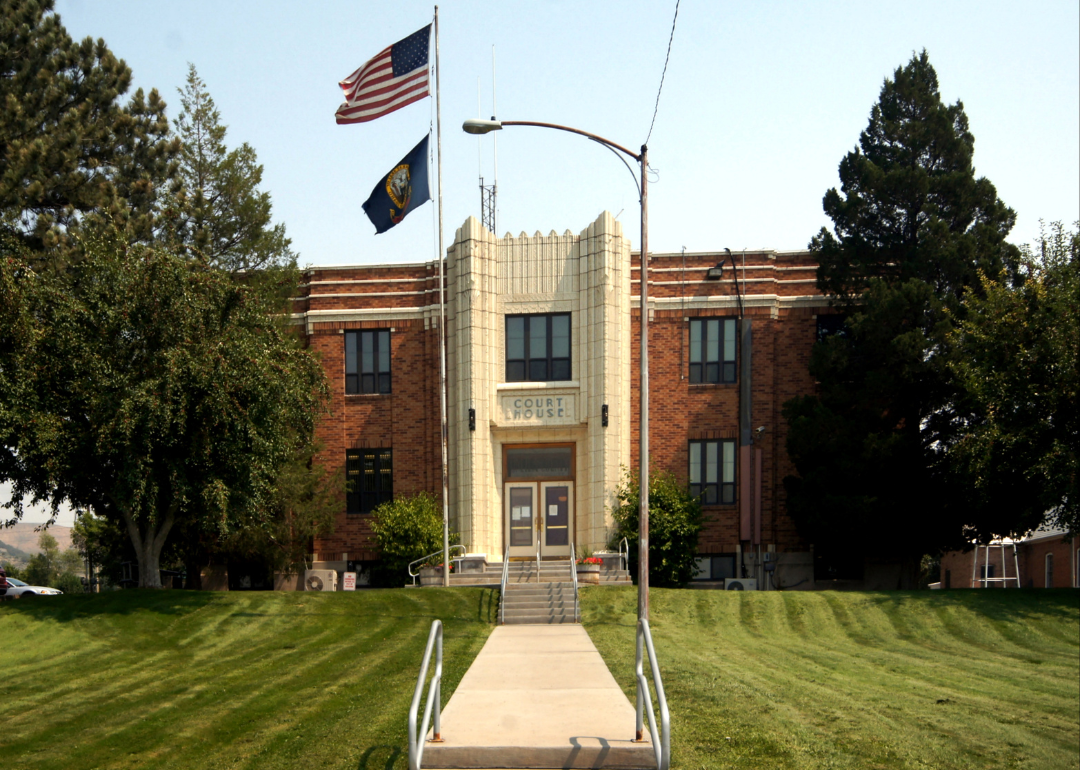
Canva
#10. Oneida
– Farmland: 343,387 acres (4.0% of state total)
– Farms: 642
– Most common crop: Native grass (156,178 acres, 45.5% of county farmland)
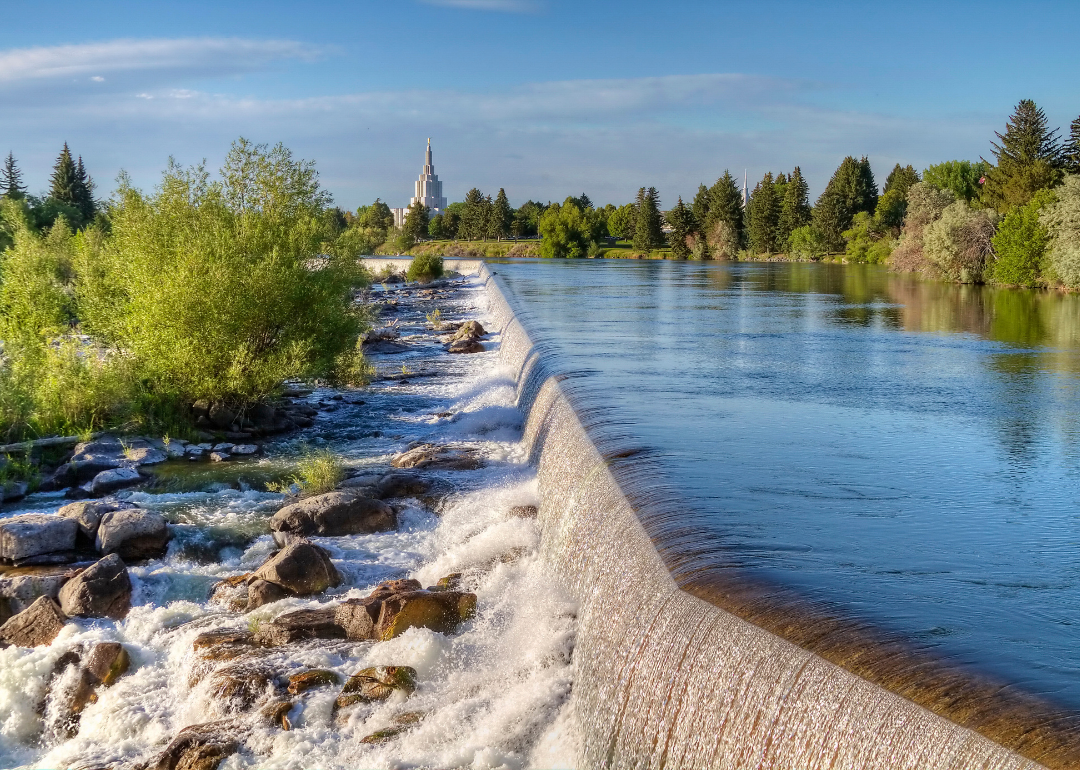
Canva
#9. Bonneville
– Farmland: 354,487 acres (4.2% of state total)
– Farms: 989
– Most common crop: Native grass (92,670 acres, 26.1% of county farmland)
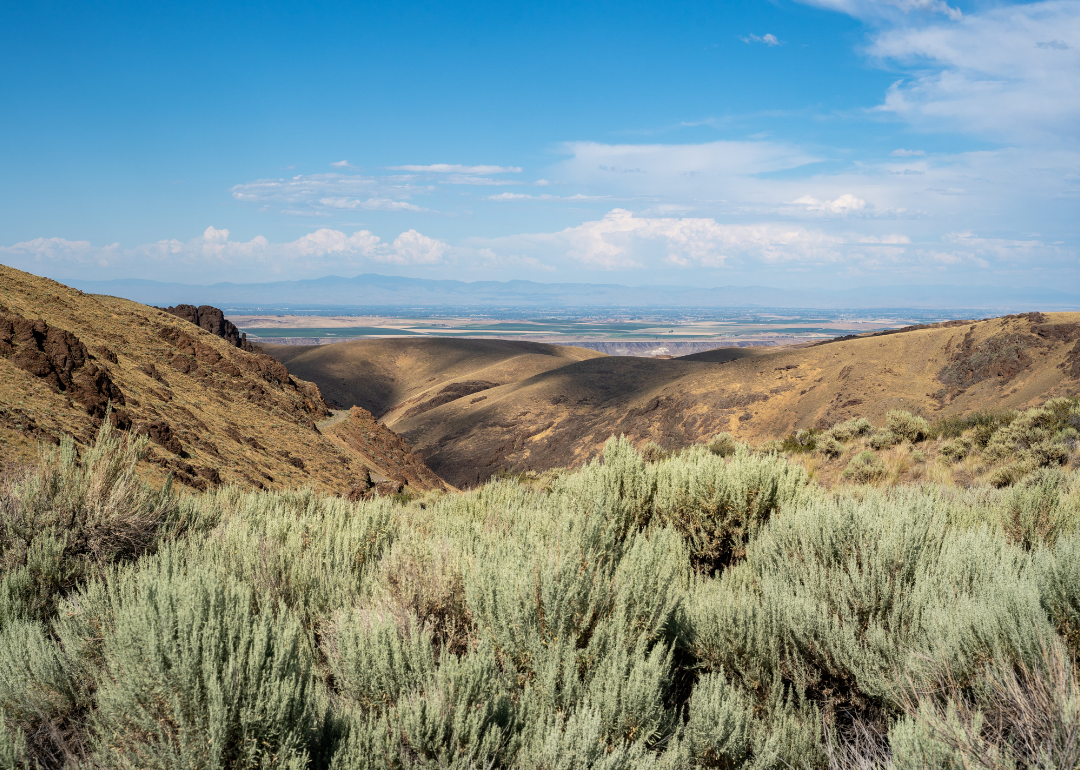
Canva
#8. Owyhee
– Farmland: 375,989 acres (4.4% of state total)
– Farms: 489
– Most common crop: Native grass (309,206 acres, 82.2% of county farmland)
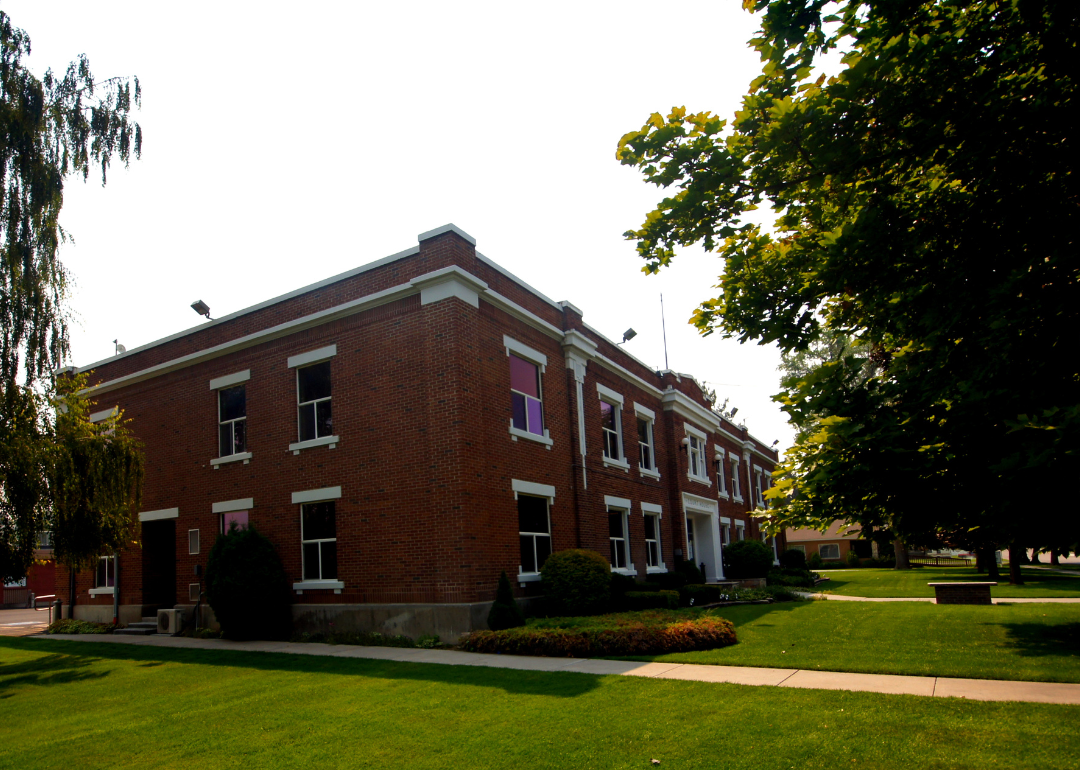
Canva
#7. Power
– Farmland: 402,378 acres (4.7% of state total)
– Farms: 445
– Most common crop: Cp38e safe grass (Conservation Reserve Program) (59,797 acres, 14.9% of county farmland)
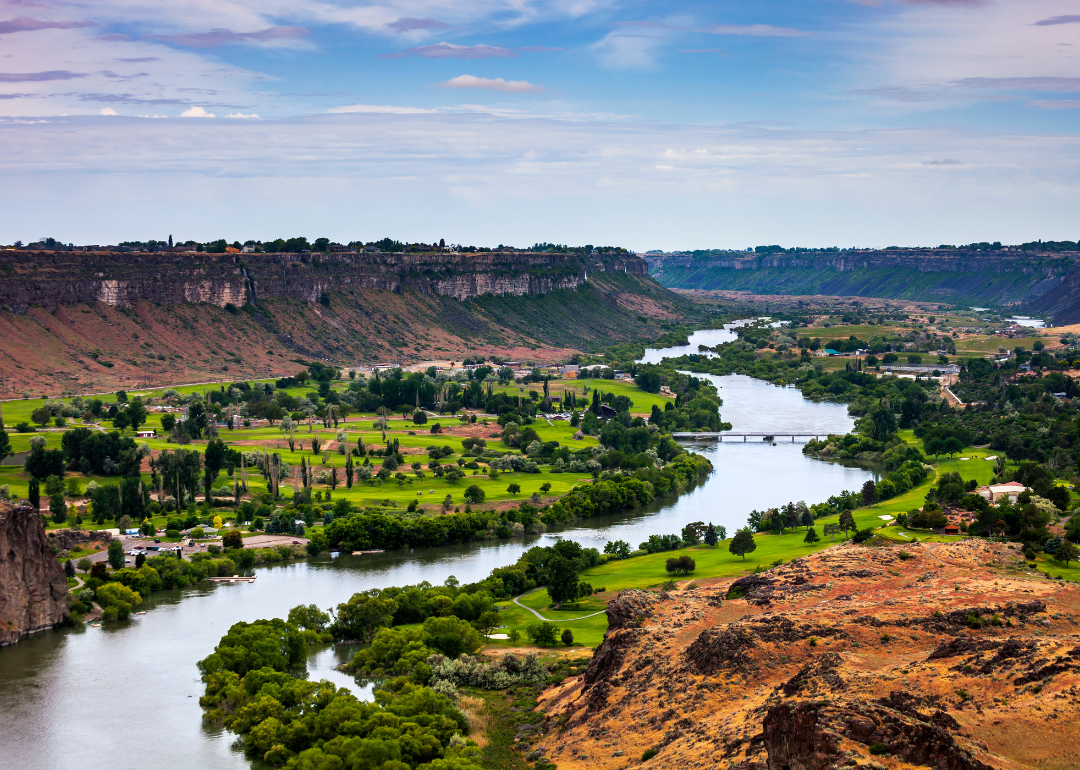
Canva
#6. Twin Falls
– Farmland: 448,894 acres (5.3% of state total)
– Farms: 1,378
– Most common crop: Native grass (181,882 acres, 40.5% of county farmland)
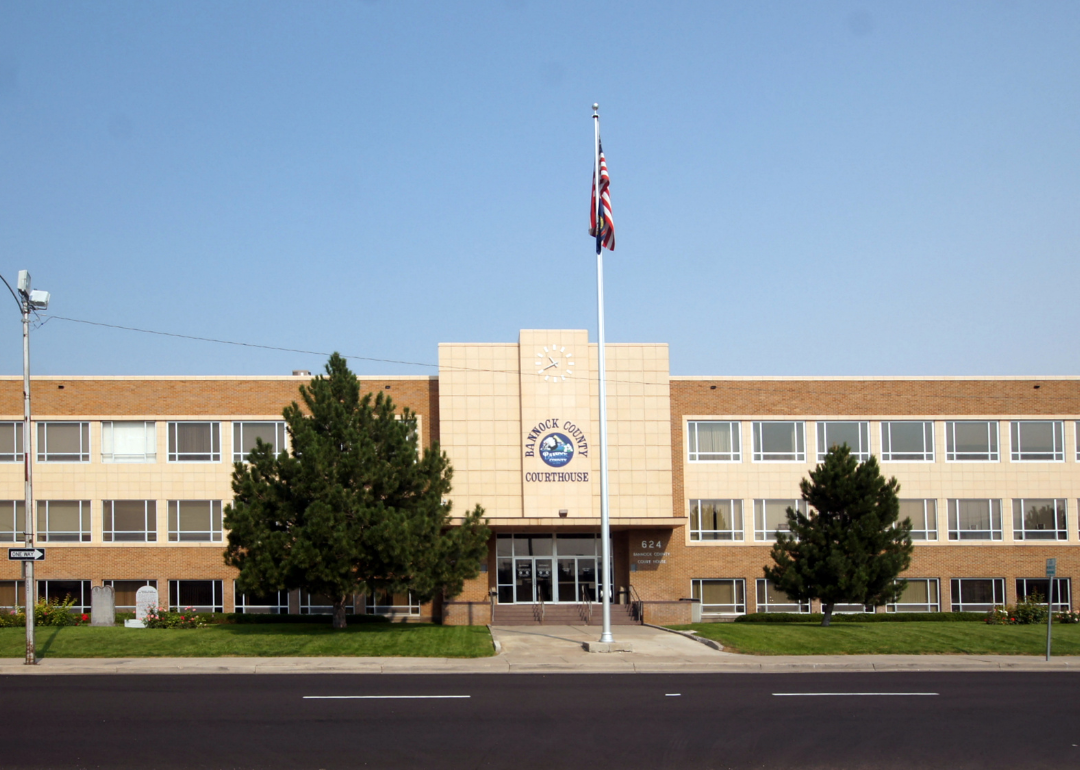
Canva
#5. Bannock
– Farmland: 450,222 acres (5.3% of state total)
– Farms: 584
– Most common crop: Native grass (283,844 acres, 63.0% of county farmland)
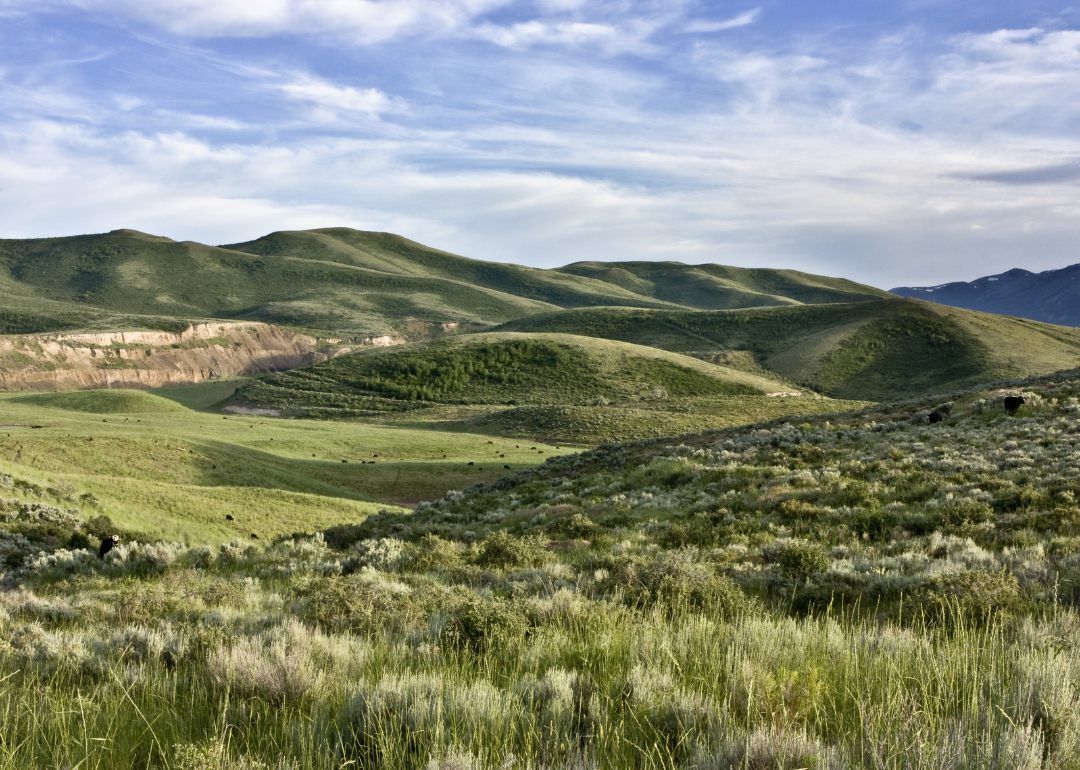
Tucker James // Shutterstock
#4. Bingham
– Farmland: 466,380 acres (5.5% of state total)
– Farms: 920
– Most common crop: Native grass (156,231 acres, 33.5% of county farmland)
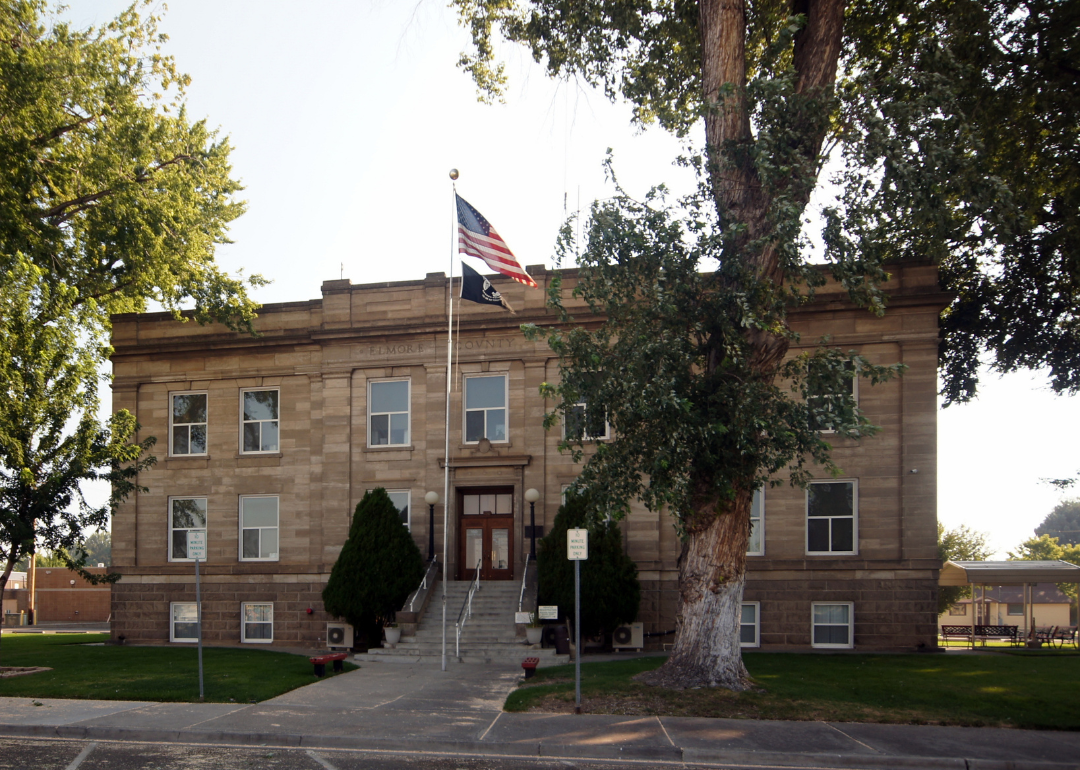
Canva
#3. Elmore
– Farmland: 532,495 acres (6.3% of state total)
– Farms: 465
– Most common crop: Native grass (368,637 acres, 69.2% of county farmland)
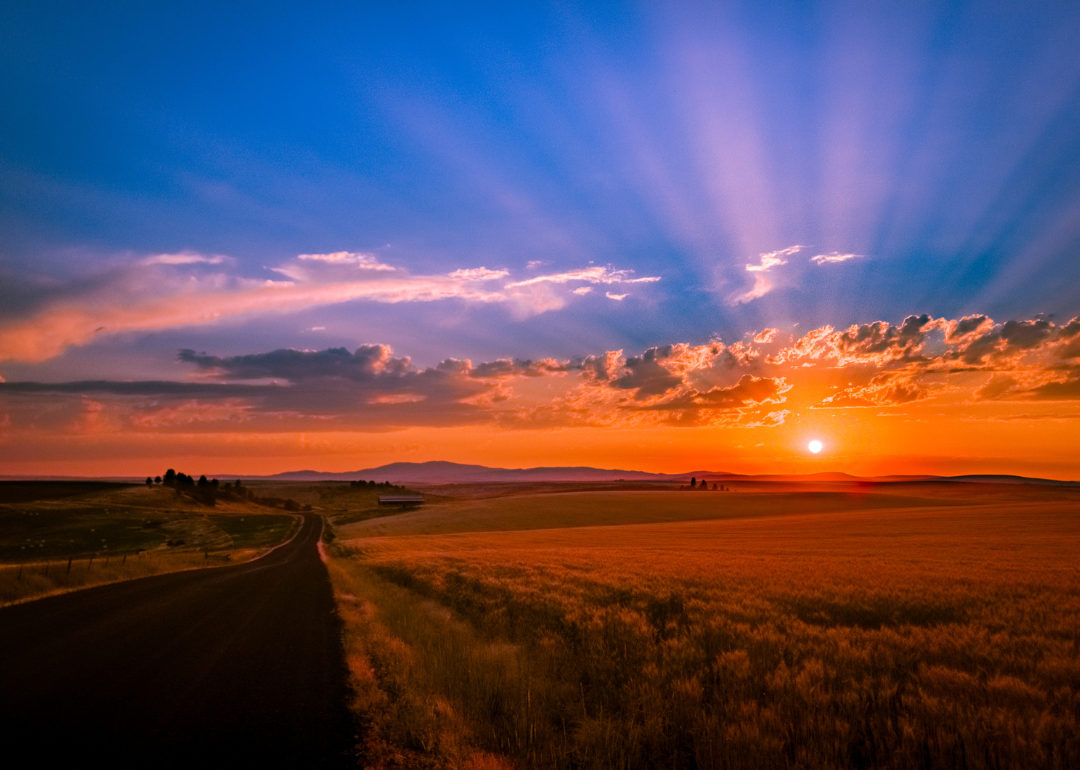
Canva
#2. Idaho
– Farmland: 613,084 acres (7.2% of state total)
– Farms: 1,151
– Most common crop: Native grass (438,519 acres, 71.5% of county farmland)
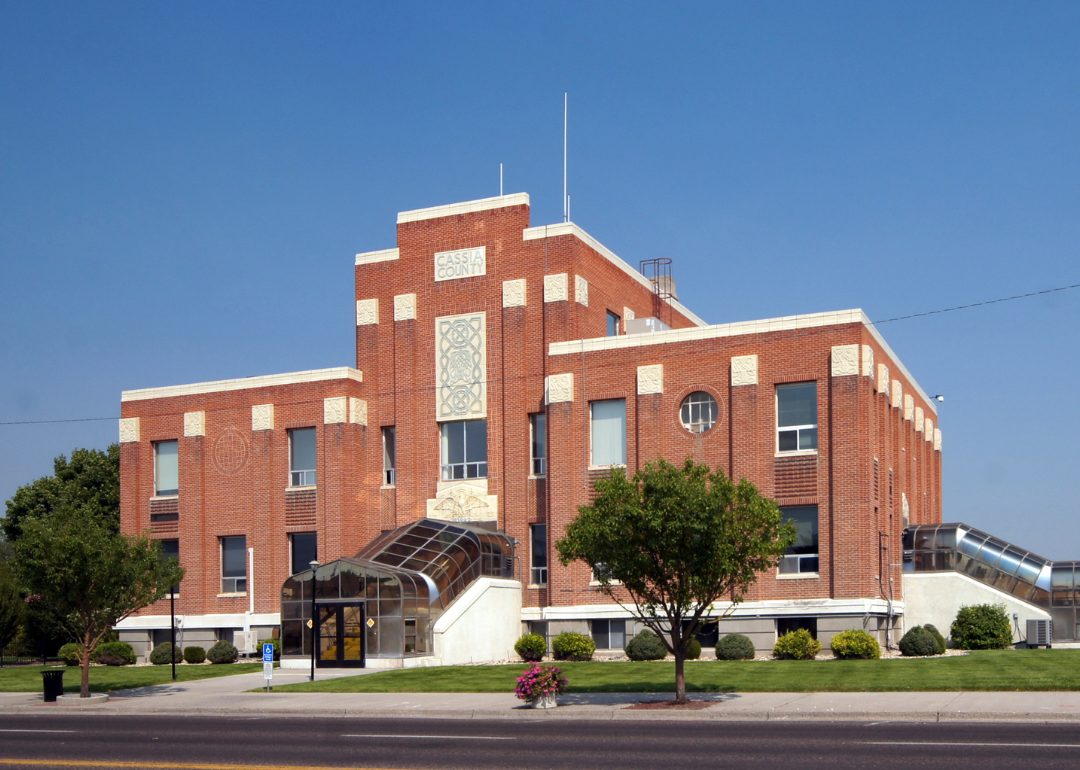
Canva
#1. Cassia
– Farmland: 662,771 acres (7.8% of state total)
– Farms: 843
– Most common crop: Native grass (256,322 acres, 38.7% of county farmland)





